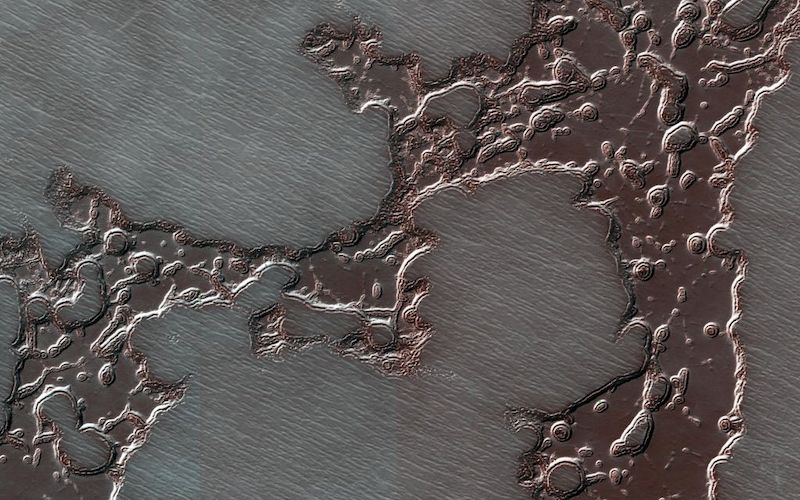
A new Mars mission is finally underway. On December 20, 2020, the United States government’s two houses of Congress agreed on NASA’s final budget for fiscal year 2021, which includes plans for a Martian ice-mapping satellite currently targeting a 2026 launch. The budget request for the mission, formally called the Mars Ice Mapper, is reported to have surprised planetary scientists when it was submitted by the Trump administration in February 2020. Those initial documents gave only scarce details, making it hard to understand the mission. This is why announcements made at a November 30 virtual Planetary Science Advisory Committee meeting provided exciting insight on the satellite, and on what the mission aims to accomplish for NASA, commercial space companies, and humanity.
According to TheSpaceReview.com, the mission is a precursor to support later human missions to Mars.
At the November 30 meeting, NASA said the Mars Ice Mapper will serve a host of purposes. In particular, it will use familiar technology to make new discoveries, creating the best geographic maps of water ice, geologic activity, and environmental changes on the surface of the red planet.
Adhering to the 2026 launch timeline is crucial to NASA’s preparation for human exploration of Mars. Eric Ianson, NASA’s planetary deputy director, commented:
Finding accessible ground ice is a critical in situ resource for exploration, and it will really help inform where the best places to land on Mars are. If we’re planning for human exploration in the mid-2030s, we need to start getting information as early as the mid-2020s on where we should be planning these future missions.
Another facet of the Mars Ice Mapper mission is the planned involvement from commercial space companies and international partners. The Canadian Space Agency, for example, will play an instrumental role in the mission planning, quite literally. They will provide the satellite with its vital radar instrument, which will have a complex antenna and software capable of the geometry necessary to perform detailed mapping.
As reported by Space.com,
Such an instrument would not be the first radar capability orbiting the red planet: Both the [European Space Agency’s] Mars Express spacecraft and NASA’s Mars Reconnaissance Orbiter carry shallow radar instruments. And Venus in particular has been the target of synthetic aperture radar instruments before, because its thick atmosphere makes studying the surface from a distance difficult.
Furthermore, Ianson said at the November 30 meeting:
There have been lots of studies that have identified near-surface ice – that is, the top 10 meters (33 feet) – as critical both for science as well as preparing for human exploration. It can tell us a lot about astrobiology, geologic and climate history and modern processes.
Ianson also noted that in addition to the Canadian Space Agency, other international partners in the Mars Ice Mapper project include the Japan Aerospace Exploration Agency and the Italian Space Agency. NASA officials also hinted that the mission could prompt commercial satellite deployment, pointing to SpaceX’s controversial Starlink satellites, which are designed to provide global broadband coverage for high-speed internet access for people in rural and remote areas. This wouldn’t be the first time satellites were released in tandem with a launch mission, but the discussion on this topic has so far been vague. Other statements hinted at a constellation of communication satellites in Mars orbit, to provide resourceful relay assets not only for Ice Mapper, but also for other spacecraft currently on Mars.
NASA’s Perseverance rover will land on the surface of Mars in February 2021. Subsequent plans are not completely settled, but include an endeavor to fetch samples collected by Perseverance, using multiple spacecraft, in the coming years. Mars Ice Mapper may fill some of the gaps in NASA’s future agenda, making it a relatively significant and important mission to look forward to. Lori Glaze, a planetary science director at NASA, commented:
NASA is currently working to establish the framework for enabling international, potential commercial partnerships for the implementation of the Mars Ice Mapper as part of the agency’s plan. We have to get those identified in order to understand what the mission architecture actually looks like.
Other documents in the Trump administration’s budget request lay out plans to cut funding for 2001 Mars Odyssey: the longest surviving, continuously active spacecraft in orbit around a planet other than Earth.
Mars Ice Mapper’s mission-planning process is still moving faster than the budgeting process that first brought the Mars Ice Mapper to the scene, despite the uncertainties caused by the ongoing Covid-19 pandemic. The proposal for the budget released in February is for the 2021 fiscal year, which began last October 1.
Read more from Space.com: NASA honing plans for its Mars Ice Mapper mission
Read more from EarthSky: Will SpaceX’s Starlink satellites ruin stargazing?
Bottom line: The U.S. government recently finalized NASA’s budget for fiscal year 2021. It includes plans for the Mars Ice Mapper, a proposed Mars satellite being developed by NASA in collaboration with the Canadian Space Agency. Its goal will be to create detailed geographic maps of water ice across the surface of the red planet.











